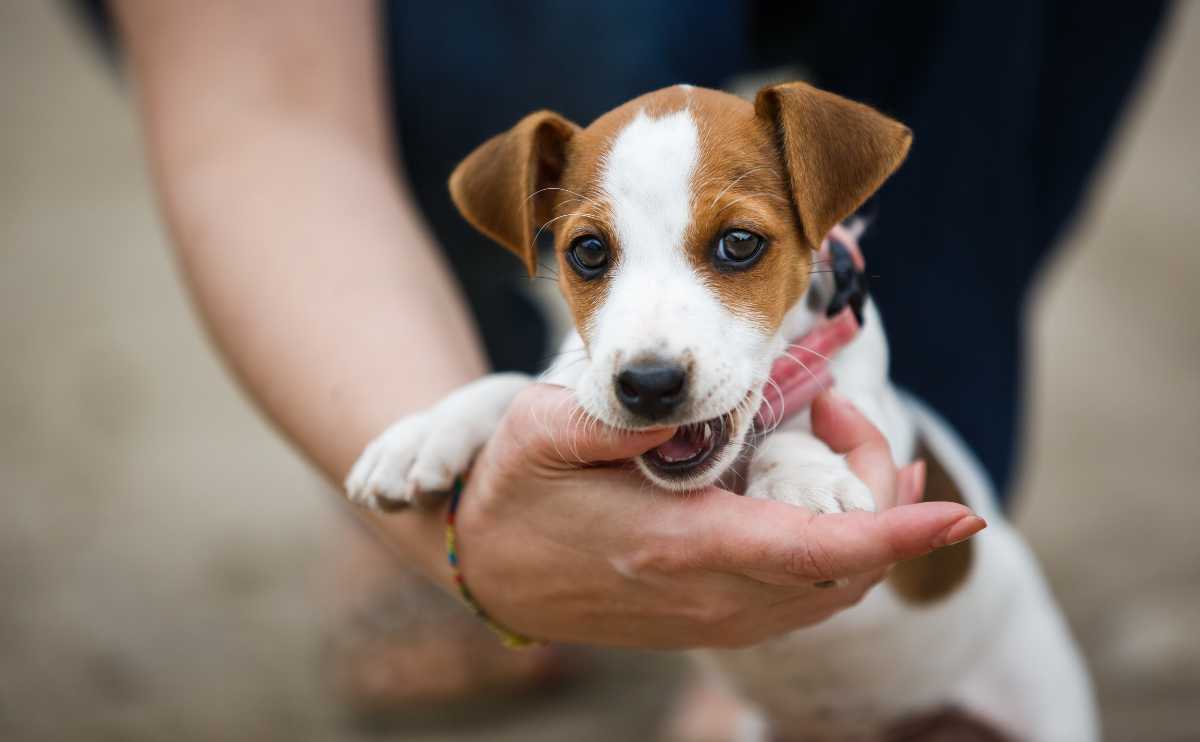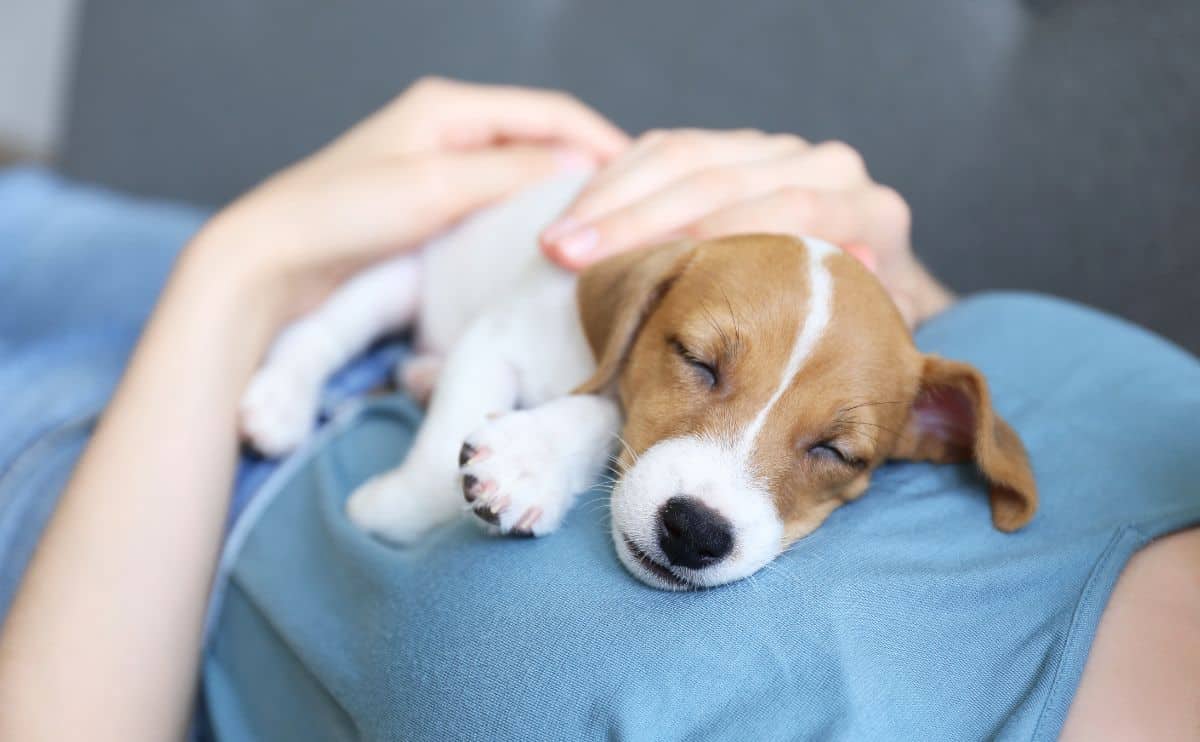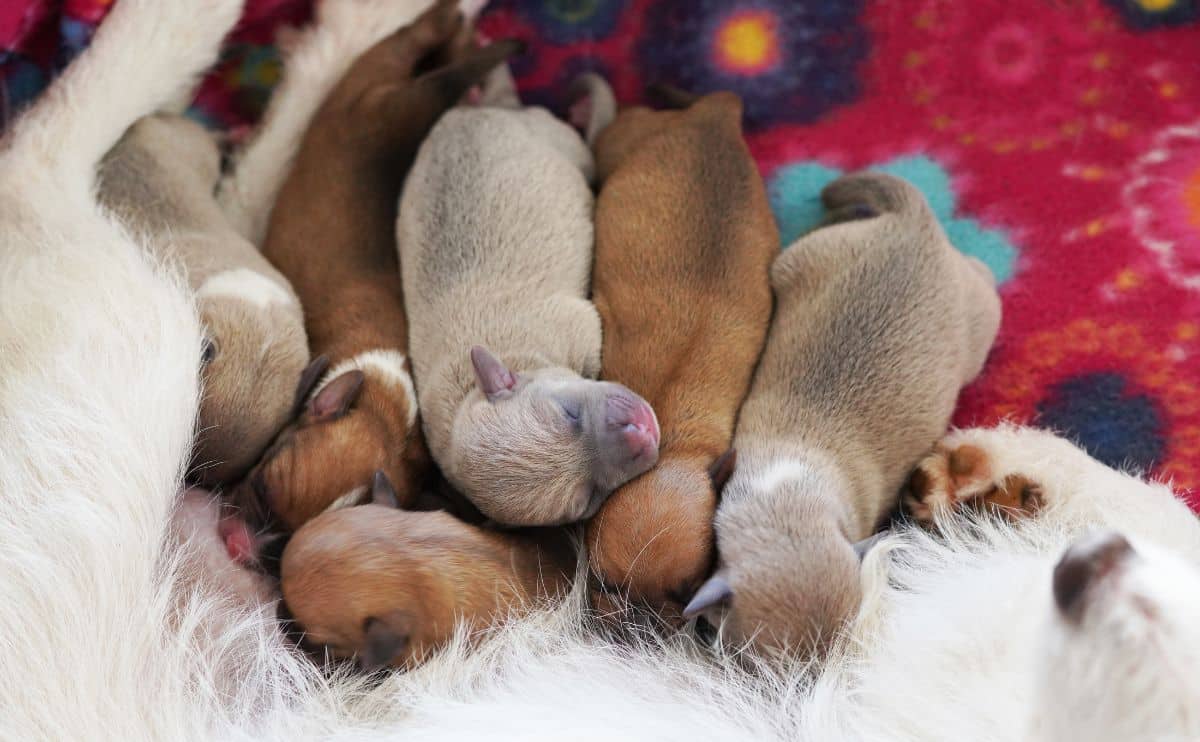When you purchase through links on our site, we may earn a commission. Here’s how it works.
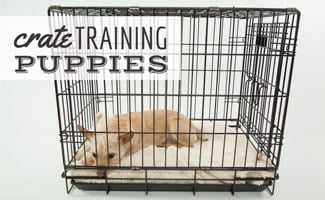
Crate training, when done effectively, can be a helpful tool. Not only does it provide your new puppy with a sense of safety and stability, it also provides you, as a new puppy owner, with a way to establish order and rule in your home. Implemented and followed through with correctly, crate training is a win for all parties involved – especially for your puppy.
The Crate Philosophy

Dogs are naturally den animals. In the wild, a dog’s den is their home, a safe space where he can sleep, retreat, and raise pups without fear of danger, without outside threat.
For a domesticated dog, a crate fulfills this natural need for a safe haven. If introduced and used correctly, the crate will be where your dog willingly chooses to sleep, hide when it storms, and quite possibly, lay around in for no other reason other than it’s their very own space.
Why Is Crate Training Your Puppy Beneficial?
There are a few, great reasons to crate train your dog.
House Training
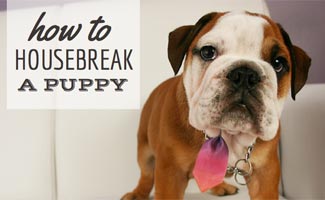
Because your domesticated dog will treat their crate just as a wild dog would treat their den, he will not want to soil their sleeping space. Therefore, you can be sure that, if at all possible, your dog will not have an accident in their crate, so when you let them out of their crate to go outside, he will naturally seize that opportunity to relieve themself.
While there are other methods of house training your puppy, this is a very instinctual transition, requiring mainly that you take your puppy out of their crate at reasonable intervals to use the restroom. This way, your puppy will pretty easily, and perceptively, pick up that he is expected to do their business outside, not in.
Learn more about housebreaking a puppy
Transporting
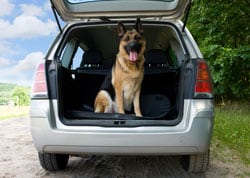
By familiarizing your puppy with a crate early on, you’re not only creating an easy avenue for house training, you’re also allowing them to become comfortable with their future means of transportation. A crate is a great way to transport your pup – whether it’s a short trip to the vet or a big move across country – and by familiarizing your pup with a crate early on, you’ll make travel a lot easier and more comfortable for your canine companion.
Teaching
Just like humans need rules to help us understand our place and our boundaries, so do dogs. Crate training is an excellent way to establish a hierarchy in your home while your pup is still learning what he can and cannot do. By placing your pup in a crate while you’re away, or when you’re at home and can’t be as attentive as you might need to be, you limit their access to your home and circumvent opportunities for your dog to chew your furniture or have an accident on your living room rug.
Therefore, when you actually let your pup have free run of your home, it will be at a time when you’re able to reprimand them appropriately for any bad behavior that occurs, and he’ll quickly learn not only that their crate is their very own space, but that the rest of the house is their Alpha’s space.
Puppyhood Is The Best Time To Consider Pet Insurance

As a puppy, your dog has probably not shown any significant health concerns at their young age. Since pet insurance companies do not cover pre-existing conditions, the younger your dog is when you signup, the better coverage you will likely receive throughout their lifetime. Further, pet insurance can help support you financially during the unpredictable puppy years when dogs are more likely to chew on things they shouldn’t and run into dangerous situations. Check out our pet insurance 101 guide to learn more and determine whether pet insurance is worth it for your puppy.
Choosing A Great Crate For Your Dog
Not all crates are created equal. While there are several types of crates to choose from, you’ll want to make sure the one you choose is the best size and fit for your furry friend. The two most popular crate types are plastic and metal crates.
Plastic Dog Crates
Plastic crates are maybe not the first choice for an in-home crate as they provide less visibility to the pup that calls it home, however, if you plan to do quite a bit of travel by plane, this is a great option as all airlines require this type of crate to transport your animal.
Plastic crates are also great for pups that need a little more security, or for a home that has a higher level of activity (think on-the-go kiddos), as it gives your pup a bit more privacy.
Metal Dog Crates
Wire, metal crates are a top pick for crate training for several reasons: Their mesh-like, collapsible structure makes them easy to disassemble and transport, and, when constructed, provides a high level of visibility and ventilation for your pup while in the crate. Like plastic crates, metal, wire crates are also easy to clean out should your pup have an accident in their home.
Sturdy and often escape-proof, these crates make a great option for growing dogs as you can purchase a larger size and easily close off the extra space with a divider while they’re smaller, removing it or moving it as they grow.
A Note On Crate Size

No matter which crate type suits you or your pup best, you’ll want to make sure that your dog has enough room to stand up and turn around in their home, but not so much room that they can soil their cage on one side, and sleep on the other, as that would negate any progress you make on the house training front. While a plastic crate would likely require you to continually upgrade as your pup grows, newer wire, metal cages are customizable with an included, movable divider, so the larger space you buy for them as a pup will also fit them as an adult.
Crate Training Guide
Once you’ve decided that crate training is for you, and which crate suits your canine companion best, it’s time to look at the actual process of crate training your pup. While the length of time it takes to crate train depends on your individual animal, his or her attitude, age, and past experiences, one thing’s for sure: you always want your dog to associate the crate with something pleasant. And even with the best dogs, baby steps are the best way to make this happen.
Step 1: Make The Introduction
Before you ever try to get your pup to step foot in their new crate, or even step near it, place the crate in a room where your dog spends a lot of his or her time. Remove or open the crate door, so your dog feels secure about exploring the ins and outs of their soon-to-be home.
If he naturally shy’s away, that’s okay. Don’t force your dog to become familiar, rather try sitting beside the crate, and speaking to your pup in a friendly tone, placing treats around, and then eventually inside the crate until he finally steps in. Placing a familiar blanket or toy inside the crate is also a great way to entice them to enter.
Step 2: Make It A Dinner Date
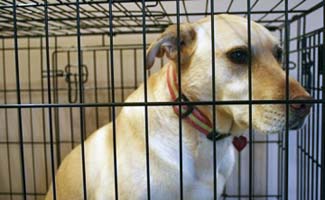
Once your pup is comfortable entering, exiting, and spending a little time inside the crate – doors open, of course – start feeding your dog their meals inside their new home. Depending on his or her comfort level, place the food all the way at the back (for very comfortable) or around the middle (for dogs that are still a little wary).
When your pup is eating inside comfortably, begin closing the door – just while he’s eating – opening immediately after he finishes. From there, work your way up to your pup spending up to 10 minutes in their crate with the door closed after finishing their dinner.
What About Whining?
If your pup begins whining at this stage, it could be a sign that you’ve moved too fast. Return to a length of time where he’s comfortable without whining and move forward from there. If he does whine, do not let your dog out unless he stops or he will begin to associate whining with being let out. This is not a habit you want to start or perpetuate.
Step 3: Make It A Short Stay

When your pup is eating and spending a short period in their crate following a meal without any sign of distress, it’s time to start crating your pup for short periods while you’re at home. Call your dog over to the crate with a treat and an accompanying command – many use “kennel” or “kennel up” – and once your dog is inside, give them another treat, shut the door, and sit quietly with your pup for a few minutes before letting them out, giving them praise and another treat.
From here, slowly add in minutes when you are away from the crate until your pup is comfortable with you being out of sight for 20-30 minutes. From here, you may begin leaving the house with your dog crated for short periods of time.
When You Return Home
When returning home to a crated dog, keep it low key. Don’t encourage their excitement by responding to them in the same way. Come in quietly, don’t go immediately to your dog’s crate, and when you do a few minutes later, do so casually and calmly.
Step 4: Make It An Extended Stay (Or Even Overnight)
Whether it’s taken you seven days, or seven weeks for your dog to achieve this level of comfort, at this point, you can begin leaving your dog in their crate for extended periods or overnight as long as he or she shows no signs of anxiety. Other than keeping with the system you already have in place, a few tips for longer stays include:
- Vary when you crate your pup. If you always “crate and leave,” your pup might begin to associate their kennel with being alone. Crating them anywhere from immediately prior to leaving to up to ten minutes before you leave will remind your pup that’s not always the case.
- Keep him or her close at night. At least at first. Once your pup knows being crated at night is not a punishment or a form of social isolation, and that you’re still nearby, you can gradually move their kennel to the location you’d prefer.
Video: Crate Training Advice From An Expert
Here’s a quick one-minute video from the dog whisper himself Cesar Millan who demonstrates a few tricks to help.
Additional Tips To Keep In Mind
- When a dog whines in a crate, take them outside to eliminate, not to play. If he does not go potty, ignore their whining until he stops. If not, you will be training your dog to whine just to play or get out of the crate.
- Never make the crate a place of punishment.
- Do not yell or bang the crate around.
- Puppies shouldn’t be left inside the crate for more than a few hours. They can’t hold their bowels and bladders for longer than that.
- Dogs aren’t meant to be crated day and night. They need social interaction. If you find your schedule requires you pup to be crated for more time than is acceptable, try adding doggie daycare or a dog walker into his or her routine.
If you have a bigger yard, you might consider a dog playpen or something that allows them to be more contained. And once your puppy graduates, use these crate training tips for dogs to keep them diligent into their adult years.
Tagged With: Crate Training, Housetraining